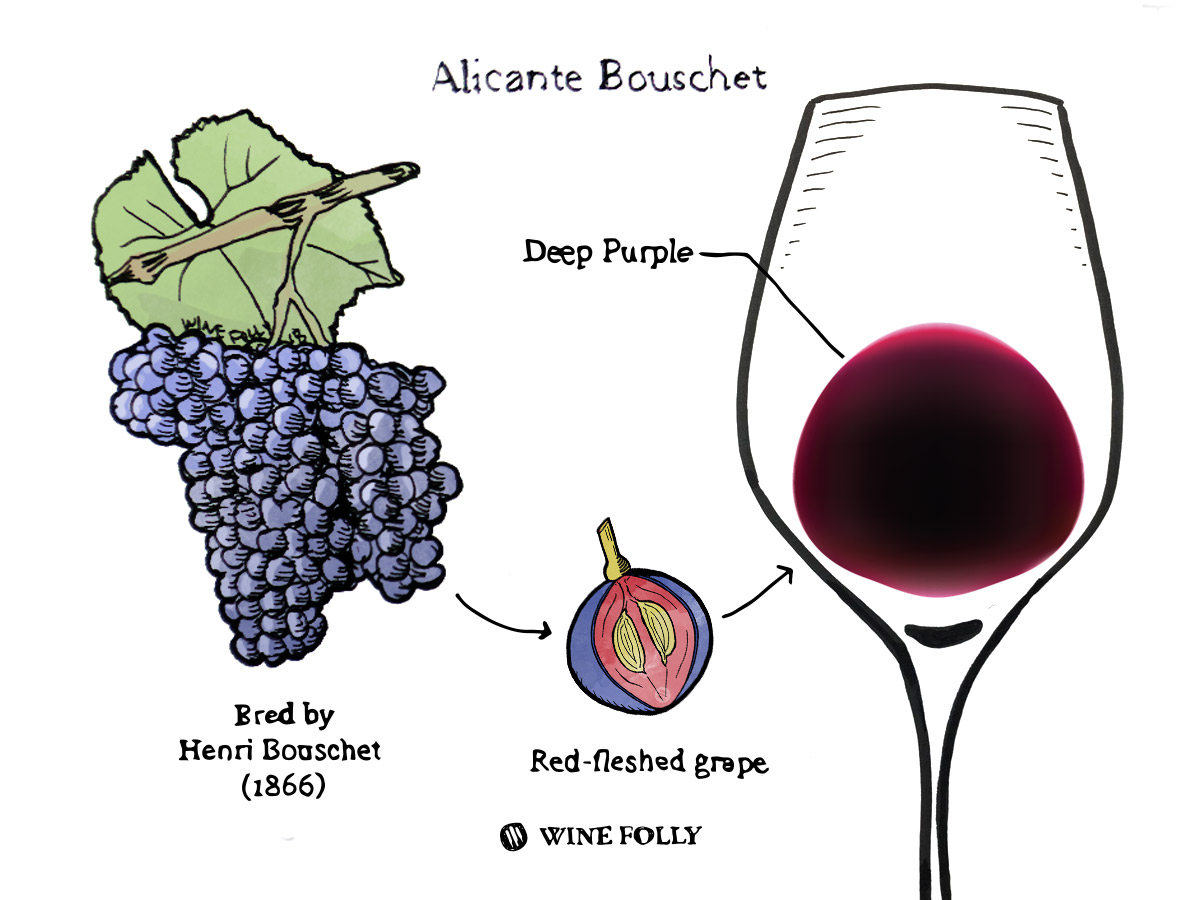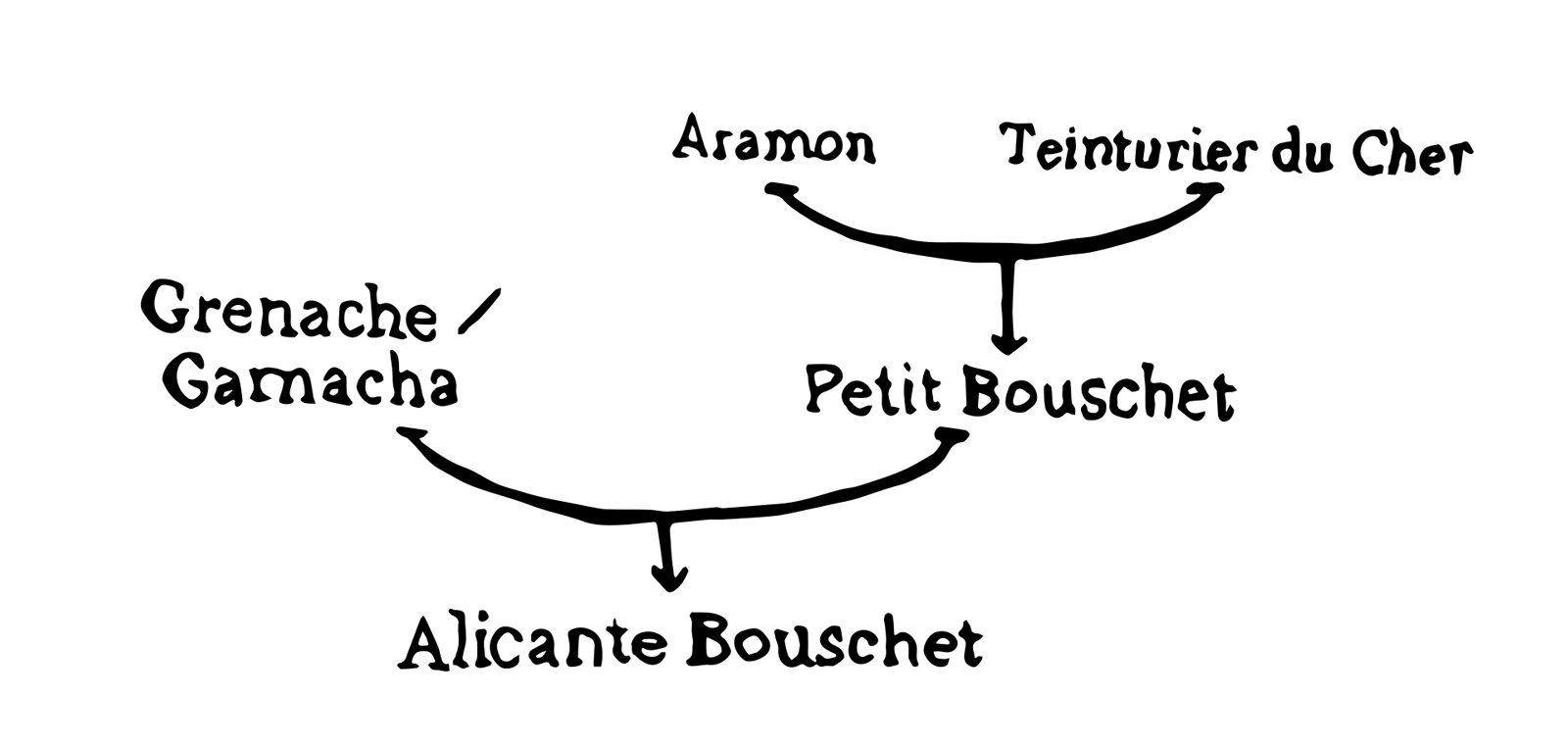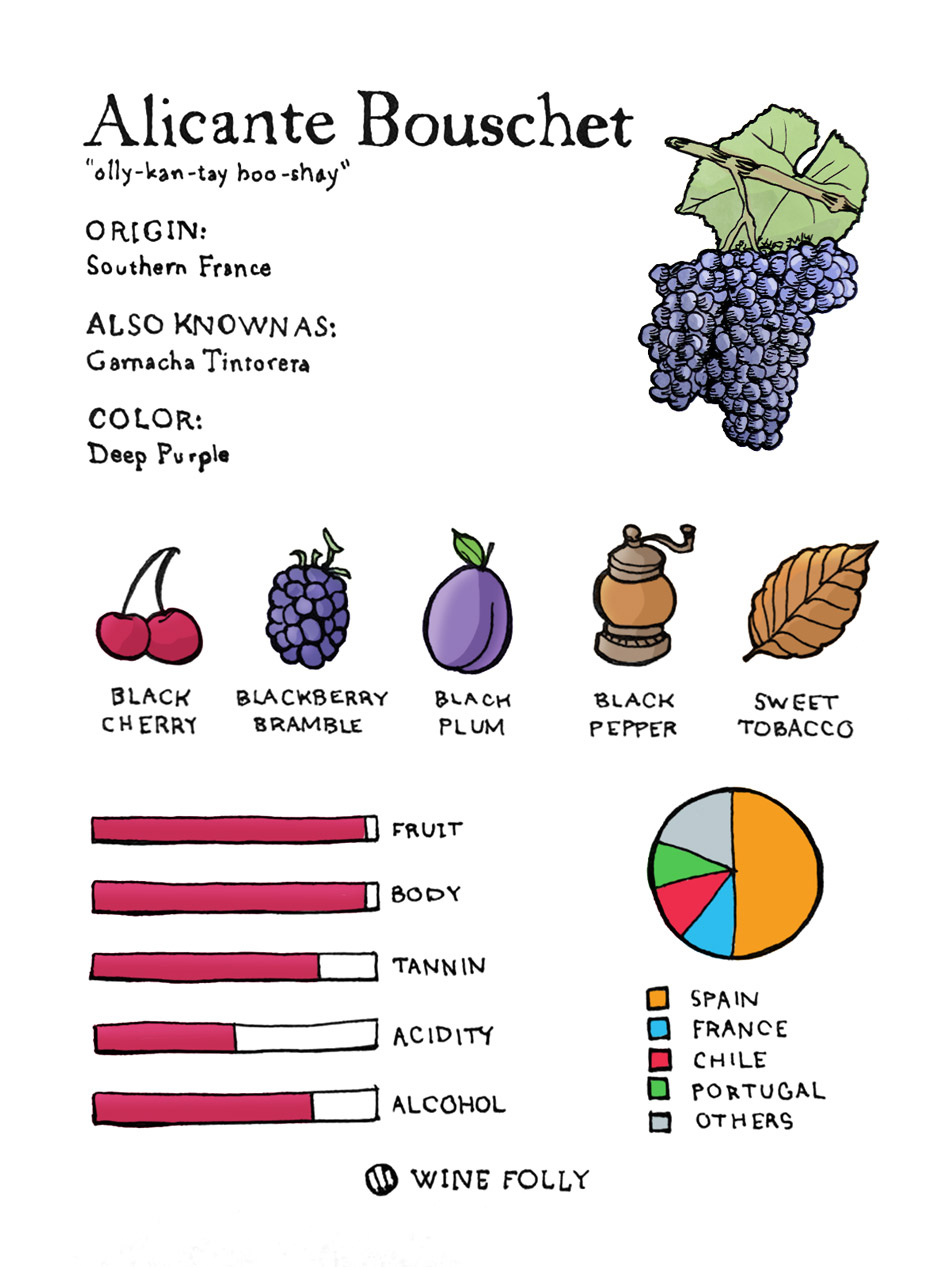One of the few red grapes with red flesh, Alicante Bouschet is an oddity that makes big, juicy red wines.
Guide to Alicante Bouschet Wine
Some grapes evolved through nature. This one was the result of a science experiment. Over its 150-year history, Alicante Bouschet has always been in the background – as a secret ingredient to embolden other red wines, or to make bathtub booze during Prohibition.
Today, Alicante Bouschet is finally bottled on its own. Lovers of rich, fruit-forward reds like Shiraz, Zinfandel, and Cabernet Sauvignon take note: Alicante Bouschet is quite the find!
Oddball Alert: The Reddest of Red Grapes
If you peel back the skin of an Alicante Bouschet grape, you’ll see what separates it from the rest. Unlike other grapes, which have clear flesh, Alicante Bouschet has red flesh. (Be prepared for purple teeth!)
Alicante Bouschet is a teinturier grape. (The name comes from the French word for “dye.”) It’s a bit of a rarity in the wine world.
Alicante Bouschet’s Family Tree
Unlike other varieties, Alicante Bouschet came into existence by careful breeding. The goal was to create a grape that had high color intensity, productivity, and fruitiness. A botanist named Henri Bouschet managed to do this in the mid-1800s by crossing fruity-tasting Grenache (known as Alicante in southern France) with a teinturier grape developed by his dad, called Petit Bouschet.
Then, after the phylloxera blight devastated French vineyards, there was an upsurge of Alicante Bouschet – the vines grow easily and yield bucket loads of grapes.
Of course, France isn’t Alicante Bouschet’s only claim to fame. It was a key wine grape during Prohibition in the US as well.
Back then, a little-publicized loophole allowed families to make a small amount of wine at home. Alicante Bouschet’s thick, tannin-filled skins made it ideal for transport to the East coast.
Essentially, you would order a few Alicante Bouschet “grape bricks,” soak them in water, and Voila! Hello, semi-legal bathtub wine.
Alicante Bouschet Tasting Notes
Big, bold Alicante Bouschet is unquestionably fruit-forward, with flavors ranging from fresh to jammy blackberries, blueberries, black cherries, and more. It has spicy, smoky flavors, along with sweeter tones of dark chocolate, baking spice, and vanilla bean. (Especially when aged in new oak!)
While Alicante Bouschet tends to be higher in body, alcohol, and tannins, its structure varies based on climate. In cooler regions, the acidity can be sharp (like Nebbiolo – and age-worthy too!), but in hotter areas, it’s more like mellow, ready-to-drink black gold.
Where To Find Alicante Bouschet
In the mid-1900s, many French and American producers realized that Alicante Bouschet wasn’t really necessary. Winemakers no longer needed the grape’s rich color, so growth declined.
Don’t worry, little orphan Alicante Bouschet – the Iberian Peninsula was happy to adopt this grape. Both Portugal and Spain have planted more Alicante Bouschet over the last 50 years.
Honestly, it’s probably better-suited to the climates in these two countries anyway. Alicante Bouschet ripens late and loves hot, dry areas with lots of sun.
Still, if you leave Alicante Bouschet untended it becomes a runaway train, yielding tons of deeply-colored fruit, but with tasteless juice. So, producers have to prune vines aggressively to reduce yields and concentrate flavors.
Portugal
Big, Smoky Reds
Among the country’s many indigenous varieties, Alicante Bouschet is one of southern Portugal’s most important red grapes. It has a long history in the hot, dry Alentejo region. It’s increasingly available as a single-varietal wine or blended with grapes like Aragonez (aka Tempranillo) and Trincadeira.
Definitely take note if you spot a Portuguese Alicante Bouschet, as these offer stupendous value.
Spain
Juicy, Fruity Reds
In Spain, Alicante Bouschet is more commonly known as Garnacha Tintorera. The warm, central Almansa region within Castilla-La Mancha is the most important area for Alicante Bouschet. You’ll find both single-varietal wines or blends made with Monastrell (aka Mourvèdre) and Tempranillo.
France
Bold, Earthy Reds
In Alicante Bouschet’s homeland, it is mostly relegated to red blends. You’ll find it in Languedoc-Roussillon, South West, Provence, and even Corsica.
Other Spots
California, Chile, and Africa
Alicante Bouschet grows in Chile, Tuscany, Calabria, Israel, and even Algeria. Just under 1,000 acres of Alicante Bouschet grow in California, particularly in the warm, central valley regions of Lodi and Madera. Perhaps American producers will champion this grape once again!


